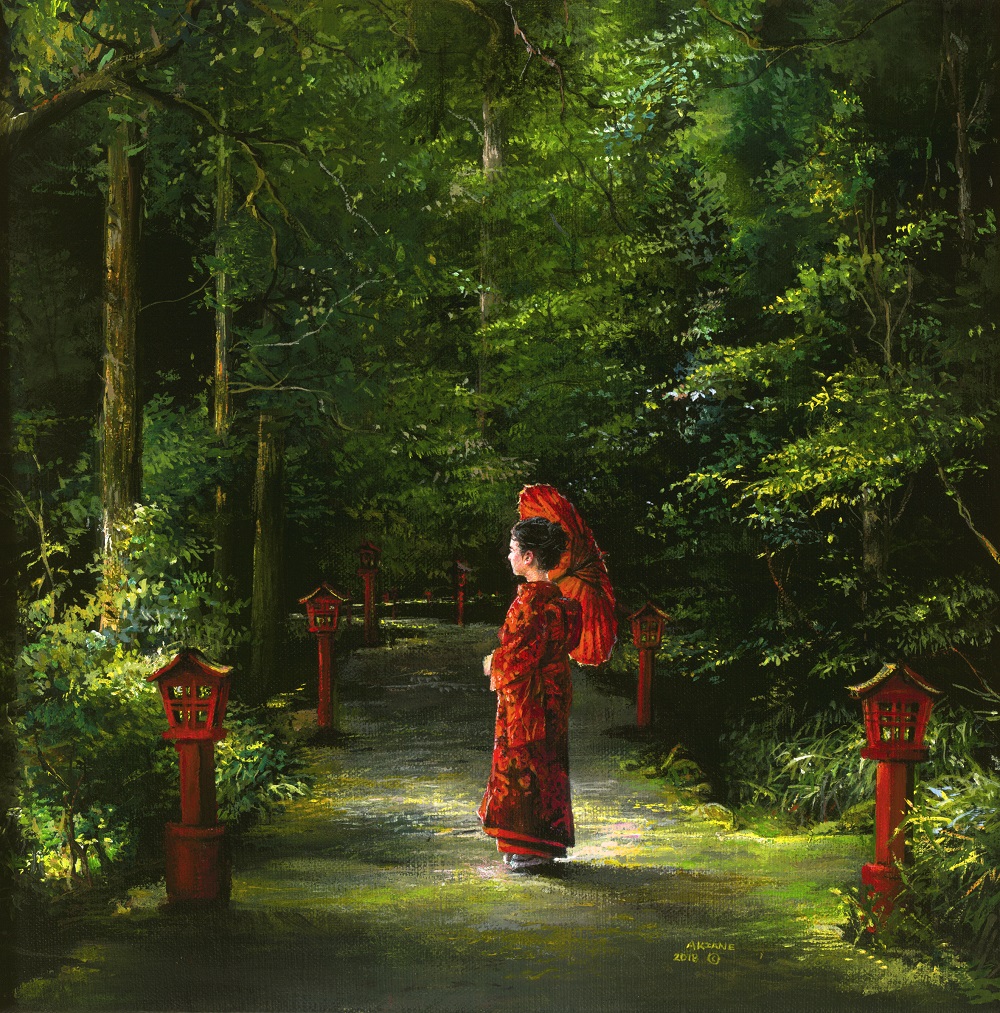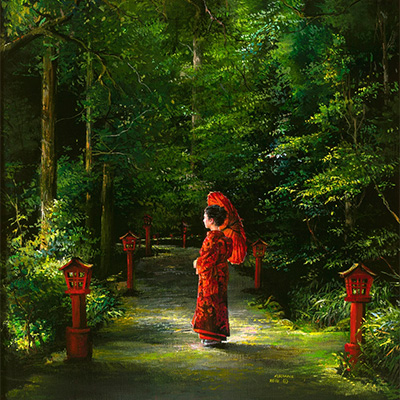
Red Kimono
-
Month after month, one painting remained mysteriously unnoticeable in every art exhibition. It was a simple story of “Summer Snow” Akiane painted in pastel hues at the age of nine. Seeing her daughter’s concern, her mother once tried reassuring her, “Nobody can recognize this work, because your story is painted haiku only Japanese will appreciate. One day it will be in Japan.”
It would take another fourteen years before someone finally took a special notice of it. It was an avid art aficionado from Japan who fell in love with the story and eagerly adopted the painting adding it to her extensive collection.
Throughout her growing years, Akiane wanted to find out everything she could about the enigmatic Japanese culture. She adopted the art of minimalism and determinedly studied the language. She spent hours in the Japanese gardens, wore her kimono, ate with chopsticks, drank ceremonial Macha tea, slept on a futon on the floor, and watched studio Glibly animations. But nothing prepared her for her real experiences in Japan when she turned twenty-three. She was transported into a world like no other. The world of harmony, beauty and perfection. . .
Despite looking foreign, Akiane did her best to blend in and be part of the culture by fully immersing in the authentic Japanese living and its intricate language. Each and every day she tried to mingle with the crowds, and be like one of the Japanese, but soon discovered it was next to impossible. Japan was a homogenous society, and there were few foreigners and even fewer Caucasians, so Akiane could not escape the curious glances and even television interviews.
The artist felt incredibly blessed to experience, first hand, a genuine hospitality and kindness offered to her by countless strangers. She had never met so many humble, tender-hearted, gracious and empathetic people in her life. She also found Japanese as some of the most hardworking people, and once in a while she witnessed the workers and business men literally collapse from exhaustion right on the sidewalks. Just like honey bees working without stopping, wearing out their wings, millions of industrious citizens would wear themselves out. Loyalty and responsibility to the group, a company, a school or a family was a priority and the most essential cultural distinction.
Quite often, Japanese blended the old traditions with high technological advancements in the most surprising way. With easy zoning codes there were huge architectural contrasts in the cities, especially Tokyo where next to the skyscrapers anyone could build houses as small as treehouses. As the artist explored the country, she was amazed that just about everything came in compact sizes, from the store items and furniture, to apartments, the hotel capsules and restaurants. A few places Akiane dined at had no more than four seats, and the waitresses had only a few inches to squeeze behind the customers in order to serve. Yet the attention to the smallest details in aesthetics and taste was truly unforgettable. Partly because almost every town had an access to fresh seafood and vegetables and the most experienced chefs.
Many Japanese continued their old traditions of simple and natural living. Since there were very few air-conditioned premises, in summer people were constantly overheated like in some giant steam room with oppressive 98-degree humidity and 100 degrees heat. The scorching summer heat did not stop even the elders from farming. They diligently weeded their gardens, tended their orchards and carried the heaviest loads up the steep mountains in the countryside. Akiane never encountered a rude or arrogant Japanese. Everyone, without an exception, exhibited the highest level of politeness and integrity.
To her, Japanese were true artisans. In their gardens, in their kitchens and in their homes. To her, their art of cordiality, the language of respect for each and every person was what had made that country so unique. However, the art of balance between nature and man and between old traditions and the new ones is what captured her artistic eye.
The contrast of deep red accents against the luminosity of greens Akiane had never seen anywhere else and the exquisitely preserved heritage exemplified the heart of this breathtaking island she so fell in love with.


